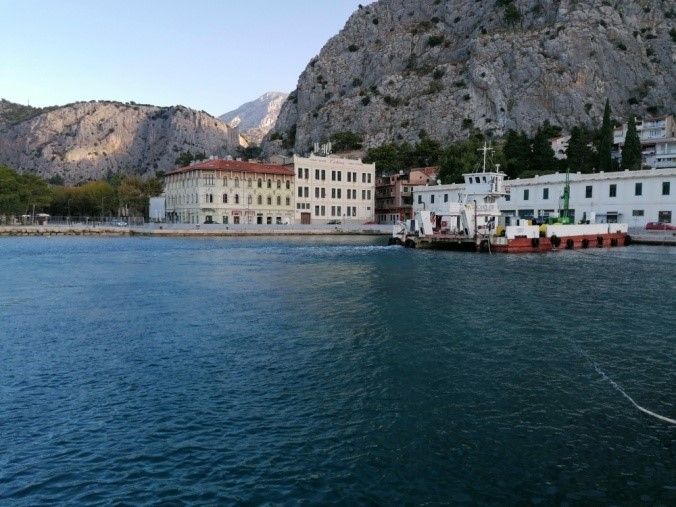Geotechnical investigation and testing – Port of Omiš
The reconstruction of the paved promenade and the construction of a pier with docks are planned in the coastal part of Omiš, near the river Cetina estuary. To prepare the detailed design for the reconstruction of the port open to the public, we have carried out geotechnical investigation works and drafted a geotechnical report.

Geological and engineering geological features of the area
The wider area of the location concerned has a very interesting geological structure. The outskirts of Omiš are dominated by the charming steep cliffs of Poljica Mountain to the northwest and Omiš Dinara Mountain to the southeast, separated by the Cetina Canyon. The precise location concerned sits at the base of the Omiš Dinara Mountain, where the coastal part is built of Eocene flysch deposits, mainly consisting of marls. Flowing steadily for millennia, the river Cetina deposited river sediments over 20.0 m thick in some areas.

Having examined the existing investigation data of the area, we established that the works ahead would be fairly complex, so we had to carry out extensive geotechnical investigation works including:
- geological and geotechnical prospecting of the wider area;
- exploratory drilling and determination of drilling cores;
- standard penetration testing;
- engineering geological mapping of the area,
- laboratory testing;
- Haefeli probe testing; and
- existing investigation data processing.
In order to prepare a geotechnical report for the project, eleven (11) exploratory rotary boreholes of individual lengths from 8.0 m to 20.0 m and a total length of 146.6 m were constructed and seven (7) Haefeli probes tests were carried out. A special feature of this project was drilling in seabed from a vessel—a ferry and a fixed pontoon. The boreholes gave us insight into the soil profile to a depth of 20 meters, while the SPT tests gave us information about the density of deposits at certain depths. Laboratory testing of the samples gave us useful parameters that were used as input data for the design. Haefeli probes were also conducted in the seabed, helping us determine the density of the surface horizon of the soil profile up to a depth of 0.8 m.

The conducted investigation works determined four engineering-geological units with specific parameters, and the port construction technique was selected in accordance. The engineering geological units were divided into made ground deposits in the surface horizon of the coastal part of the area (Qn), Cetina river deposits (Q), eluvial deposits of disintegrated marls (Qel), and marl rock mass (3E2,3).

Design guidelines
After the investigation works for the detailed design of the port reconstruction were carried out, recommendations regarding the port construction technique were established. For the areas where the depth of rock mass was determined, the method of deep foundation was selected, using piles Ф = 1200 mm in diameter. For the parts of the coast where the depth of rock mass was not determined up to a depth of 20 meters, foundation with a pile wall made of reinforced concrete drilled piles with a diameter of Ф = 1200.0 mm is planned.
Port construction
The port construction works are carried out by the Texo Molior d.o.o. from Cavtat. The construction started in November 2021, and the completion of the port is scheduled for 2025.

Read more: Offshore exploratory drilling
